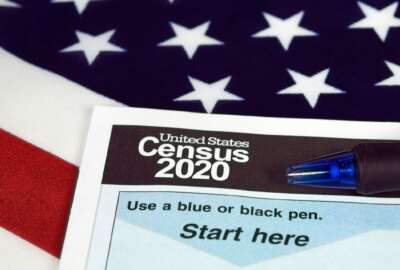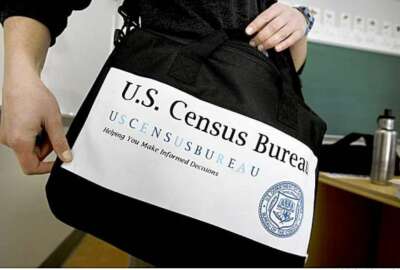
How will Census Bureau’s IT upgrades hold up in April field test?
Census Bureau officials expected they will conduct their first tech-driven count in 2020 with help data sharing.
The Census Bureau is going the distance to ensure its workforce for the 2020 count has less ground to cover.
In 2010, the agency drove more miles than UPS Inc. and spent more than $14 billion to conduct the last decennial count, which was the most expensive one yet.
Despite anxiety from Congress and the Government Accountability Office, which has flagged the 2020 count on its list of high-risk programs, Census officials remain confident they will make good on their promise to deliver the first tech-driven count in 2020.
Atri Kalluri, the chief of the agency’s Decennial Information Technology Division, said accomplishing this feat could reduce census costs and make the project less labor-intensive.
“Once in every 10 years, we used to walk all the streets in the country. It was an expensive proposition, and we had almost 600,000 [enumerators] that walked the streets,” Kalluri said Friday at a meeting of the Information Security and Privacy Advisory Board in Washington. “In this day and age, is it necessary to walk the streets to collect addresses?”
Data-sharing for a better census
Earlier this year, the Census Bureau scrapped the idea of hiring letter carriers from the U.S. Postal Service to work as census-takers. One thing the agency does want from USPS, however, is its data.
Through housing data obtained from 40,000 local governments and USPS’ Delivery Sequence File — a computerized file that contains all USPS delivery points — Kalluri said the Census Bureau could identify new residential developments on any given block.
The National Geospatial-Intelligence Agency also shared data with the bureau to help it identify areas with new development, as well as areas relatively unchanged since the 2010 count. Through this data-sharing initiative, Kalluri said the Census Bureau may only have to hire as few as 75,000 address listers for the 2020 count.
“Through that research, we found that we may have to walk the streets for about 30 percent of the housing units … that’s a huge savings,” he said. “And so that’s what we’re proposing, that’s what we’re implementing and what we have tested as part of the 2018 test.”
In order to further streamline the 2020 count, the Census stood up its online self-response system this week. The goal, Kalluri said, is to maximize self-response through the internet and minimize non-response follow-up.
“Typically we send you a census ID, and you use that ID to respond to us … But what if you did not get that ID, or something happened in the mail, or it’s an address that we somehow missed? We still want to give an opportunity for you to respond over the internet,” Kalluri said.
All told, Kalluri said the agency will have 44 of 52 systems up and running for peak operations of the 2018 end-to-end field test. By the final 2020 count, he said the bureau will have all 52 running.
“There’s an expectation from Congress and also other stakeholders to basically ensure that the solutions we do have would be the solutions that we would be using in 2020,” he said. “So we’re trying to maximize not only the software solutions, but also hardware for the 2018 test to resemble how we would have it in 2020.”
In April, the Census will conduct its first — and only — 2018 end-to-end field test in Providence County, Rhode Island. The test is meant to be a small-scale dress rehearsal for the nationwide population count in 2020.
Census officials originally planned to conduct two other field tests in rural West Virginia and suburban Washington, but due to budget shortfalls, the agency has scaled those tests back to only include address checks.
Making census-taking more mobile — and secure
For the enumerators who do wind up knocking on doors, the Census has signed a device-as-a-service contract to give its workers iPhones and iPads and an app to record census responses.
Because the Census plans to introduce so many changes to the 2020 counts, it has also opened up hotlines to field phone calls from people who have questions about their census questionnaires, or who would like to respond over the phone.
The agency has also reached out to community partners, like local post offices and libraries, to help get the message out about returning census forms. Last month, the Census Project, a nonprofit group, expressed concerns over a Justice Department request to ask about citizenship status on the 2020 census forms.
Kalluri said the Census Bureau has been working to reduce some of the anxiety around the census.
“We are embarking on a campaign that says, ‘The objective is to count. This information will not be shared with other federal agencies and this count really helps the communities.’ We have an effective way of making the case — whether they are residents or non-residents — to actually respond,” Kalluri said.
Given the prevalence of data breaches in the federal government, Kalluri said Census has been working with the Department of Homeland Security and conducted penetration tests to shore up its cyber defenses.
“If there is no trust, we will not get the response rate that we are expecting. That’s the risk that we are monitoring,” Kalluri said. “Even if it happens in a different agency, if it’s in the newspapers, you know that there is a reluctance to respond, and that affects us. And so we take it very seriously.”
Copyright © 2025 Federal News Network. All rights reserved. This website is not intended for users located within the European Economic Area.
Jory Heckman is a reporter at Federal News Network covering U.S. Postal Service, IRS, big data and technology issues.
Follow @jheckmanWFED
Related Stories

Budget, staffing shortages at Census could threaten 2020 count in rural areas




